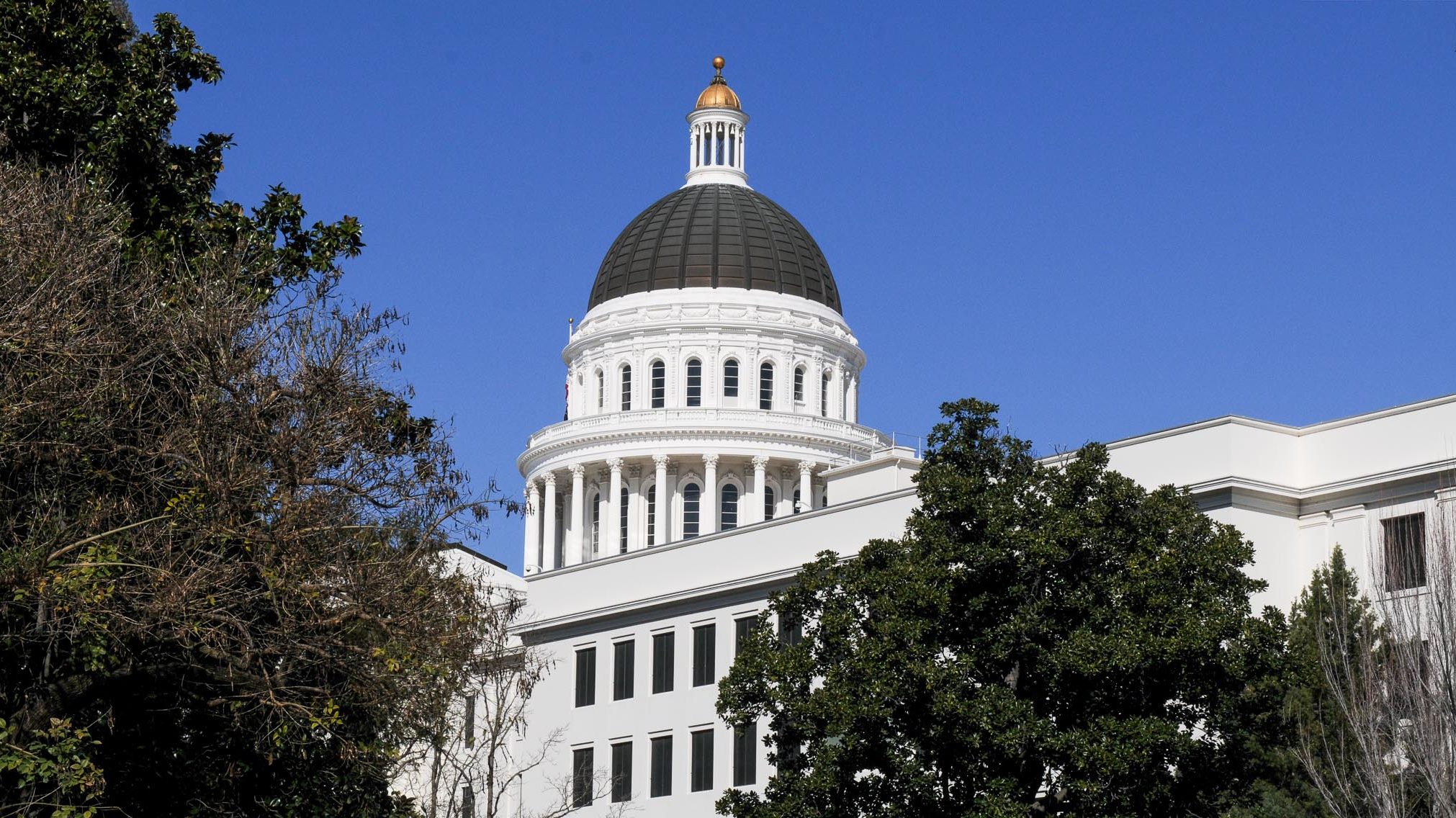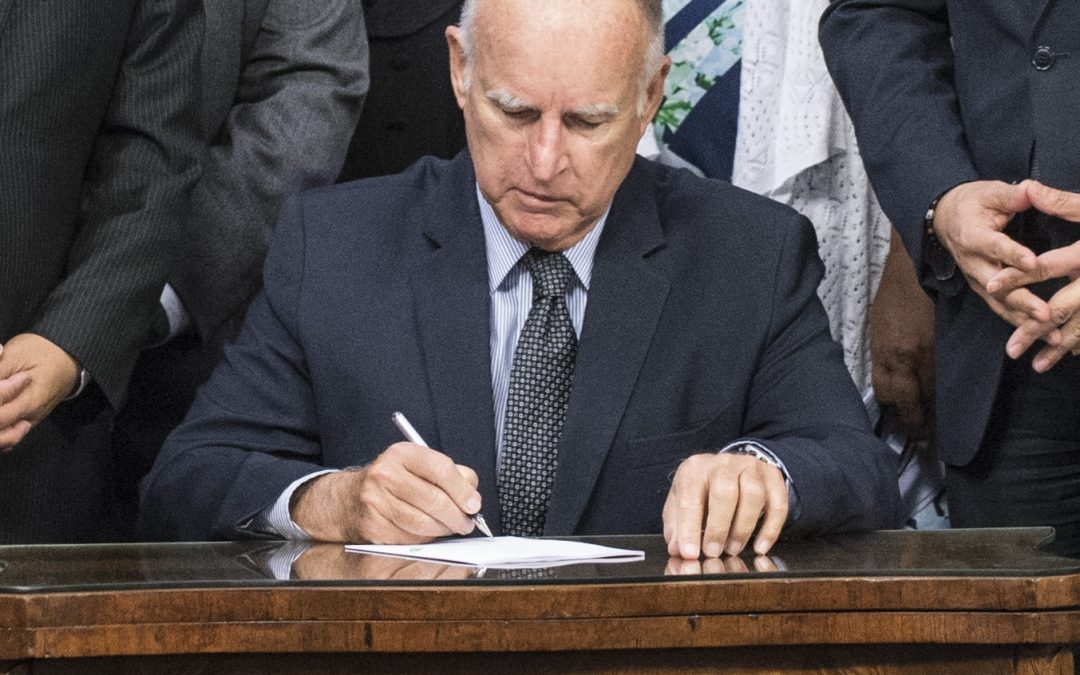
Los Angeles Unified School District Board of Education. (Photo: LAUSD)
When Approving a $7 Billion Bond Proposal, Did the LAUSD Board Violate the Brown Act?
Public notice is not a technicality, it’s a fundamental right and the first step in the right to due process
By Edward Ring, August 19, 2020 2:30 am

As reported in the Beverly Press and elsewhere, the “the Los Angeles Unified School District Board of Education voted unanimously to place a $7 billion school construction bond issue on the November ballot which would allow the LAUSD to continue its multi-year effort to upgrade school facilities.”
Writing for CityWatch on August 6, Jack Humphreville had this to say about this big new bond: “The Usual Something-for-Nothing: LAUSD Proposes $7 Billion Bond Measure, but No Reform.” But maybe this bond shouldn’t even be on the ballot.
That’s the take from Richard Michael, publisher of BigBadBonds.com and a tireless advocate for reform who focuses on California’s local governments and school districts and their countless output of public financing bonds. According to Michael, because there was no public notice given of the August 4th meeting, LAUSD has violated the Brown Act which sets the requirements for local governing body’s open meetings.
The Brown Act specifies that “Regular meetings must be noticed through the posting of an agenda at least 72 hours before the meeting.” Michael alleges that not only was public notice not provided, but that three days later the LAUSD clerk signed a certification of the resolution attesting that a notice was posted.
When reached for comment, Richard Michael explained that filing a false document is a felony (Penal Code 115). As he put it, “the resolution adopted at the meeting was filed with both the Board of Supervisors and the Registrar. The filing was intended to induce action that affects real estate (direct property taxes), as well. These are big deals, not technicalities. If a certification can’t be trusted by the recipient, then the entirety of all paperwork, filed anywhere, is put in jeopardy for lack of credibility.”
In a criminal complaint emailed to Los Angeles County District Attorney Alan Yochelson and others on August 9, Michael challenged the county to reject LAUSD’s request to include their $7 billion bond proposal on the November 2020 ballot because the school district did not fulfill the requirements of California’s open meetings laws. Michael writes: “LAUSD held a meeting on August 4, 2020. Can you find the agenda at lausd.net? It isn’t there and never was. I preserved relevant pages surrounding the meeting date at The Wayback Machine (archive.org). Of course, you have the power to subpoena records as well.”
In a follow up email sent on August 13 to Los Angeles County executives including Yochelson, Michael alleges that the LAUSD fraudulently certified their board resolution to place the $7 billion bond on the November ballot. He wrote:
“Notice for the meetings was not posted as required by law and the actions of those districts are voidable. Because the districts waited until the last minute to sneak the measures past the public, there is no time to correct the lack of notice with a new meeting. The deadline for filing measures passed on August 7, 2020. The Board of Supervisors must reject the requests for consolidation
based on fraudulent certifications.”
In his August 13 email Michael then provided links to the LAUSD meeting announcements, using the internet archive “Wayback Machine,” to support his allegation.
These rules are more than mere technicalities. Why aren’t advocates of fiscal responsibility in public education – reducing administrative bloat, reforming pensions, ending grossly overpriced and grossly overbuilt construction projects, to name three big ones – also being more attentive to possible violations of the Brown Act?
If Michael is correct, local bond proposals frequently make it onto the ballot without the proponents following the required procedures. This constitutes a cause of action. It constitutes a powerful weapon against a borrowing binge that consumes our local and state policymakers, and powerful leverage to force reform as an alternative to more borrowing and spending.
Even when only taking into account local bond issues, the scale of borrowing in California is nonetheless staggering. In November 2018, voters approved 113 local bond measures totaling over $18 billion. In November 2016, voters approved 181 local bond measures totaling over $30 billion. Most of these bonds were for public schools. But what LAUSD is proposing is at a new scale entirely; at $7 billion, it is the biggest local bond proposal in California’s history.
If fiscal reformers want to join Richard Michael and oppose LAUSD’s latest proposed bond issue on procedural grounds, it may add to recent voter momentum that challenges historical precedents. Because historically, California’s voters have been overwhelmingly supportive of local school bonds, typically approving them at rates consistently over 80 percent. But in the most recent election this past March, voters only approved 46 percent of the proposed general obligation bonds for California’s schools and colleges.
One would think that in this fraught environment, LAUSD’s Board of Directors would be more careful to follow the required procedures governing new bond proposals. Even before the setbacks brought on by the COVID pandemic, which raised costs at the same time as it lowered revenue, LAUSD’s finances were skating on thin ice. Just over a year ago, Los Angeles voters rejected a parcel tax, Measure EE, that would have brought into the district’s coffers an additional $500 million per year of badly needed funds.
LAUSD’s Board of Directors, along with the Los Angeles County District Attorney, are invited to identify where public notice was in fact given in advance of the August 4 meeting where LAUSD approved a resolution to ask voters to approve a $7 billion bond. And if public notice was not given in compliance with the Brown Act, the same parties are invited to explain why this bond measure can legally be included on the November 2020 ballot in Los Angeles County.
Then again, LAUSD’s Board of Directors may also explain why they have failed to enact reforms that are generally supported by a bipartisan assortment of education reform organizations, and pretty much anyone that is not either part of the teachers union or somehow supported by the teachers union. That would include, as noted, fiscal reforms such as reducing administrative bloat, reforming pensions, and ending grossly overpriced and grossly overbuilt construction projects. It might also include more general reforms, equally bipartisan, such as making it easier to terminate incompetent teachers, preferring merit over seniority in layoffs, and extending the period necessary for new teachers to acquire tenure.
When reached for a follow up comment, Michael didn’t mince words. “This is not about whether people should vote one way or another on a particular tax measure,” he wrote. “This is about a secret meeting with a very significant agenda item. It’s about corruption – the school district violated the Brown Act, the district attorney is looking the other way, the registrar is pretending it’s none of their business, and supervisors just want mo’ money, mo’ money, mo’ money.”
Voters may be more inclined to support more spending, if they see tangible evidence of progress – better managing costs, and better managing the process of educating the next generation of Californians. But voters, and reform activists, should be equally vigilant when it comes to making sure that whenever a bond or tax measure is put onto the ballot, due process is respected.
Providing public notice is not a mere technicality. It is a fundamental right. It’s the first step in the universal right to due process. Here is how the Brown Act opens: (Government Code 54950): “The people of this State do not yield their sovereignty to the agencies which serve them. The people, in delegating authority, do not give their public servants the right to decide what is good for the people to know and what is not good for them to know. The people insist on remaining informed so that they may retain control over the instruments they have created.”
- Ringside: Will the Delta Pumps Operate at Capacity this Winter? - December 18, 2025
- Ringside: Will Advocates for More Water Supply Projects Find Unity? - December 11, 2025
- Ringside: EVs and California’s Future Demand for Electricity - December 4, 2025





Very good article! What you haven’t said is that school bonds are paid off by property taxes. But there isn’t enough tax money to service $7 Billion of fresh bond debt. Further, Proposition 13 limits the tax rate the assessor can charge property owners.. So what happens? The Assessor INFLATES the so-called “value” of Real Estate in the county so they can grab MORE tax money (without changing the tax rate) to pay off the bonds. Why do you think property in LA County is so expensive that most people can’t afford to buy a home? This is the big reason! But before the bonds can be issued, they have to be approved by trusting voters because “its for the children.” It’s always “for the children.” No, it’s for the greedy school board and corrupt administrators. The bonds have high ratings because investors know taxpayers have no choice but to pay through the nose or lose their homes at tax auction! We are being taken for fools. Don’t believe me? Just wade through the yearly Debt Report prepared by the Los Angeles Unified School District. The most recent report, for Fiscal Year 2018-2019 unabashedly tells us how they set the bond offerings – and control the amount extorted from taxpayers so their gravy train will roll along forever:
“It is important to monitor the levels and growth of direct debt and overall direct debt as they
reflect the debt burden borne by our taxpayers and provide perspective on taxpayers’
capacity for future additional debt.”
Do you understand what that means? The LAUSD is milking us. They limit their bonded debt to 2.5% of current, assessed value of school property, stated in the report as $692.7 Billion. Thus, their bond offerings can currently total no more than $17.3 billion, of which $10.1 billion is presently outstanding. This means the LAUSD is limited to “only” $7.2 billion for their next bond issue. And when the assessor revalues their property, that limit will increase by about $500 million! Bloated property value is to their advantage and to OUR detriment!
Moreover, with enrollment crashing from over 654,000 to 621,000 in just six years, and over $10 billion in outstanding bonds, why does LAUSD still claim they need more money? If this shady measure makes it to the November ballot and is approved by voters, this latest feeding frenzy will let LAUSD gorge on another $7+ Billion. California’s Department of Education reports that LAUSD spends over $13,400 per student per year. What has that investment bought? LAUSD brags their graduation rate is 78%. But only 46% of the graduates meet entrance requirements for a CA state university. That’s 35 out of 100 entering students who qualify for a university education. It’s nothing to brag about.
The fact is, LAUSD squanders money received from Los Angeles county property taxes. When they estimate the cost of interest on the bonds, they then search for lower interest rates. They’ve saved billions this way. But we taxpayers STILL pay based on the higher estimate. What happened to the “saved” money? They keep it.
The voters LAUSD mainly appeals to for bond passage are teachers and renters. They push the unions to coerce their members to vote for bonds. They want renters to think that they aren’t affected by property taxes because they don’t own the property. Then ALL these folks are shocked when their rent increases….. so they demand higher wages so they can afford it.
No, this measure should NOT be on the November ballot until tax payers have a chance to understand just what the greedy school board is trying to quietly do, and — it appears — the Registrar’s office is trying to cover up. Violations of the Brown Act are not trivial. According to the California Election Code, Penal Code and other provisions of law,, some of these activities are FELONIES, and the DA’s office needs to step in NOW!
Excellent article! What you haven’t said is that school bonds are paid off by property taxes. But there isn’t enough tax money to service $7 Billion of fresh bond debt. Further, Proposition 13 limits the tax rate the assessor can charge property owners.. So what happens? The Assessor INFLATES the so-called “value” of Real Estate in the county so they can grab MORE tax money (without changing the tax rate) to pay off the bonds. Why do you think property in LA County is so expensive that most people can’t afford to buy a home? This is the big reason! But before the bonds can be issued, they have to be approved by trusting voters because “its for the children.” It’s always “for the children.” No, it’s for the greedy school board and corrupt administrators. The bonds have high ratings because investors know taxpayers have no choice but to pay through the nose or lose their homes at tax auction! We are being taken for fools. Don’t believe me? Just wade through the yearly Debt Report prepared by the Los Angeles Unified School District. The most recent report, for Fiscal Year 2018-2019 unabashedly tells us how they set the bond offerings – and control the amount extorted from taxpayers so their gravy train will roll along forever:
“It is important to monitor the levels and growth of direct debt and overall direct debt as they
reflect the debt burden borne by our taxpayers and provide perspective on taxpayers’
capacity for future additional debt.”
Do you understand what that means? The LAUSD is milking us. They limit their bonded debt to 2.5% of current, assessed value of school property, stated in the report as $692.7 Billion. Thus, their bond offerings can currently total no more than $17.3 billion, of which $10.1 billion is presently outstanding. This means the LAUSD is limited to “only” $7.2 billion for their next bond issue. And when the assessor revalues their property, that limit will increase by about $500 million! Bloated property value is to their advantage and to OUR detriment!
Moreover, with enrollment crashing from over 654,000 to 621,000 in just six years, and over $10 billion in outstanding bonds, why does LAUSD still claim they need more money? If this shady measure makes it to the November ballot and is approved by voters, this latest feeding frenzy will let LAUSD gorge on another $7+ Billion. California’s Department of Education reports that LAUSD spends over $13,400 per student per year. What has that investment bought? LAUSD brags their graduation rate is 78%. But only 46% of the graduates meet entrance requirements for a CA state university. That’s 35 out of 100 entering students who qualify for a university education. It’s nothing to brag about.
The fact is, LAUSD squanders money received from Los Angeles county property taxes. When they estimate the cost of interest on the bonds, they then search for lower interest rates. They’ve saved billions this way. But we taxpayers STILL pay based on the higher estimate. What happened to the “saved” money? They keep it.
The voters LAUSD mainly appeals to for bond passage are teachers and renters. They push the unions to coerce their members to vote for bonds. They want renters to think that they aren’t affected by property taxes because they don’t own the property. Then ALL these folks are shocked when their rent increases….. so they demand higher wages so they can afford it.
No, this measure should NOT be on the November ballot until tax payers have a chance to understand just what the greedy school board is trying to quietly do, and — it appears — the Registrar’s office is trying to cover up. Violations of the Brown Act are not trivial. According to the California Election Code, Penal Code and other provisions of law,, some of these activities are FELONIES, and the DA’s office needs to step in NOW!